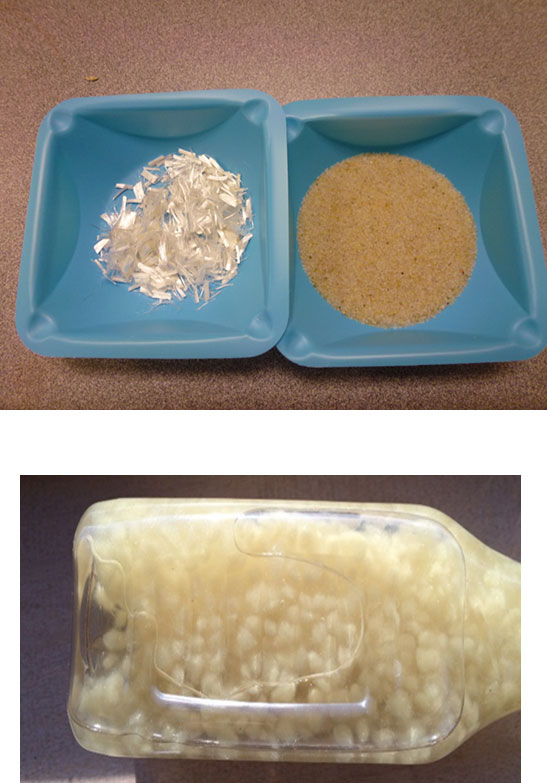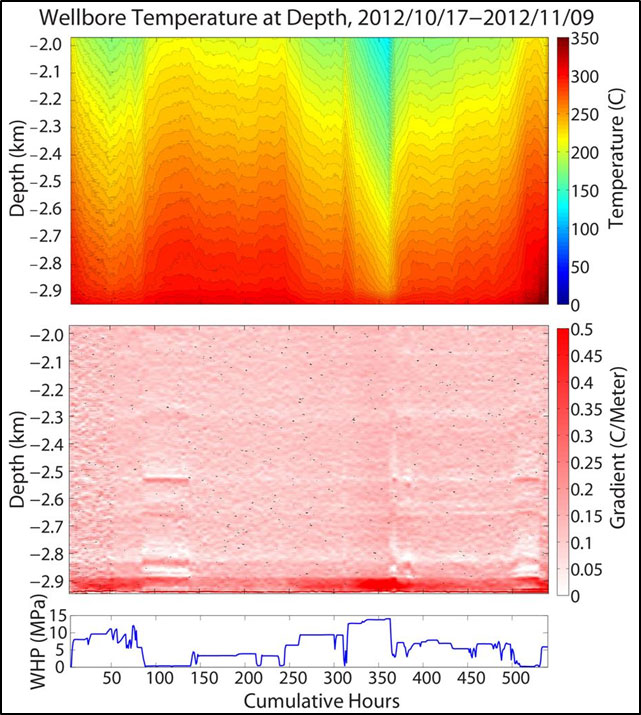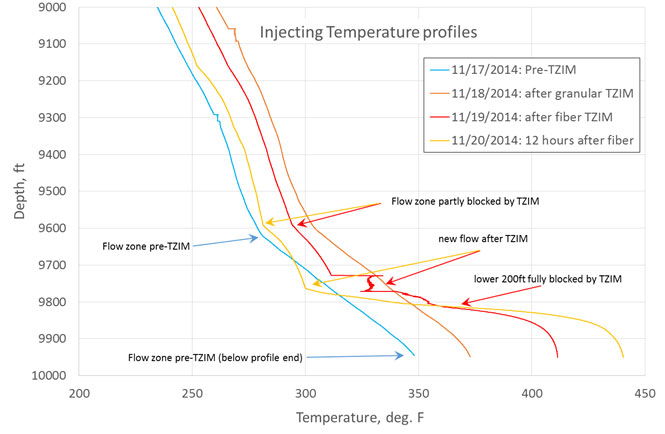Finding new ways to reduce the cost of hydraulic fracturing while improving its effectiveness has been the focus of much research. AltaRock (http://altarockenergy.com/) has developed unique new diverters that can be customized to increase zonal coverage. Welcome to an interview with Laura Nofziger, AltaRock Energy, who discusses new geothermal crossover technologies to improve stimulation and production in oil and gas wells.
What is your name and your relationship to the oil industry?
My name is Laura Nofziger. I have been working in the energy industry since graduating from The University of Texas at Austin. I have sixteen years of energy industry experience in production, reservoir and fracture stimulation engineering and management. I previously served as eni Petroleum's Production Manager over their Nikaitchuq asset on the North Slope of Alaska where I was responsible for the overall management of Production & Operations activities, including well performance, plant performance, maintenance activities, production team staffing, HSE performance & compliance of the operations staff, as well as financial & strategic planning of the asset. As production manager, I managed a team of more than 80 employees, a 40,000 BOPD processing facility, over 40 extended-reach horizontal wells, and the asset's operating budget. Prior to my position at eni, I was the lead engineer for AltaRock Energy (ARE) in Seattle, Washington.
While at AltaRock, I aided in the development of patented EGS technologies, prepared a proposal to the Department of Energy, which resulted in a $6MM grant, and assisted in an EPA-required Environmental Impact Statement for the Newberry Crater EGS project. I developed the Stimulation and Well Testing Best Practices for the Geysers demonstration project while being responsible for all production, stimulation, well testing and logging cost estimates, procedures and field execution.
Prior to AltaRock Energy, I worked as a production engineer for several independent oil and gas companies, overseeing onshore southern US assets where I consistently demonstrated the ability to increase production from older fields through workover and bypassed pay recommendations.
I have recently re-joined the AltaRock team as the Senior Vice President and Managing Director of AltaRock Services, LLC, a wholly-owned subsidiary of ARE, where I am excited to lead a team of 24 technical and field professionals, including the Blue Mountain Geothermal Power Plant operations and maintenance staff and the technical and business development team members within AltaRock.
What is your main area of research?

AltaVert product line is available in fibrous, granular, spherical or particulate geometries. The material is neutrally buoyant in water.
Currently, I am working in the geothermal industry focused on bringing down the cost of power produced through engineered geothermal systems; as well as; managing a business development team which is focused on monetizing AltaRock's IP portfolio. Part of that commercialization strategy has been introducing the petroleum market to AltaRock's customized diverter technology for cross-over use in hydraulic fracturing or remedial treatment applications in oil and gas wells. Reducing the cost and effectiveness of multi-stage stimulations are goals that the geothermal and oil/gas industries have in common. Geothermal has long been undercapitalized and with oil prices hovering around $50/bbl, both industries need to invest in technologies that can deliver similar production results for less investment. The dollar is king these days in both industries.
What are a few of the insights or revelations that you've made while involved in your work? What does your new process / technology do?

Utilizing distributed temperature sensing during a multi-stage stimulation treatment to monitor fluid movement and diversion.
I have been surprised at the degree of customization that has been required to be successful at different job sites with our diverters. I think that there is a "one size fits all" attitude with diversion technology, especially in the oil and gas industry. We have found that the size, geometry, and chemical composition of the diverter material needs to be tailored to each treatment in order to be successful. Geostatic temperature, fracture aperture, known fractures/faults, permeability, completion data, perforation size and number as well as treatment fluid chemistry should be considered when designing a stimulation, hydraulic fracturing or remedial treatment with diverters. In addition, we have found that surface pressure expression is not always correlative to diversion downhole. Having performed multiple stimulations with diverters in geothermal reservoirs, where permeability is fault and natural fracture-driven and the reservoir fluid can be steam, the stimulation treatments are often pumped with a vacuum at surface. AltaRock has utilized temperature surveys and distributed temperature sensing technology to monitor diversion downhole in real-time, with or without surface pressure indication of such.
As you do your work, what do you consider to be the "must-have" critical competencies or knowledge bases?

AltaRock uses injecting temperature surveys before, during and after fracturing treatments to determine if diversion has been successful.
During past jobs in the petroleum industry, my focus has been on leading a team of operations and maintenance professionals to maximize production and equipment life while driving down the per barrel lifting cost, so I am partial to investing in field technicians that are experienced, knowledgeable and open to innovation. I believe that having the right field supervisor can make or break a project.
As far as critical competencies, I believe that structural geologists and reservoir engineers who truly understand stress and geomechanics are essential to a successful fracturing program.
What are the "must have" technologies?
For multi-stage fracturing, diverters are inexpensive tools that can be customized to increase zonal coverage. I also think that fiber optic temperature sensing, though expensive, is indispensable data for knowing in real-time which zones are being treated in a large frac job.
What are the software programs that you use on a regular basis?
Microsoft Office products more than anything!! I also like the ROXAR (Emerson) suite of Tempest products. They are less expensive than some of their counterparts; and, yet, they are user friendly and comprehensive. We tend to develop tools in-house to suit our needs; thus, AltaRock developed a stimulation software called AltaStim that is available to our clients. It is capable of generating a Mohr circle analysis and will predict a generated microseismic cloud based upon some general inputs.
What are your next steps? What do you hope will be your next leap forward? Any breakthroughs on the horizon? What are they?
AltaRock is finalizing our latest round of lab testing for the lower temperature diverter product line. I hope to have those results ready for publication in the next month. We are hoping to partner with a key player in the industry to further the knowledge base of diverter use. We believe that the diverter industry is in its infancy. We are excited to explore the use of finer grained materials for far-field diversion. We believe that successful far-field diversion could increase the effective stimulated reservoir volume of each multi-stage treatment by 30% by increasing fluid efficiency. We are also excited to demonstrate our bead sealer technology to the industry. The bead sealer technology is ideal for near wellbore diversion in lower temperature reservoir (100-200F) as it blocks in the perforation tunnel.
Are you optimistic about being able to economically produce oil at $50 in the area where you are working? Why or why not?
AltaRock believes that full-scale adoption of diverter technology, thereby replacing mechanical means of isolation, could reduce the cost of multi-stage hydraulic fracturing significantly. Full-scale adoption will require a concerted effort by key industry partners to hone the technology. If chemical diverters replace mechanical isolation tools, producing oil at $50 per barrel becomes much more economic. Personally, I don't believe that this market downturn, though prolonged, is very different than ones that we've weathered in the past. When I graduated from college, oil was $10 per barrel! That was a scary time to be in the industry as well. We are at the mercy of the commodity market, the greater forces of supply and demand. I think the key to long-term survival for any E&P company is to always behave like oil is $50 per barrel, even when it's much higher. In practice, project economics should be run at fairly high hurdle rates, short pay-out timeframes or low commodity prices.